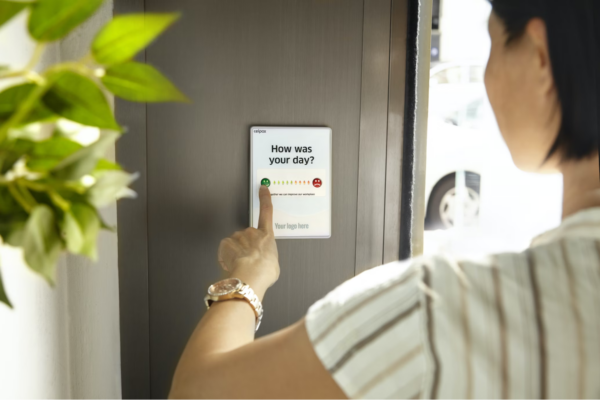93% of business leaders say that their ability to work is strongly contingent on how well their collaborators can express their needs. This highlights just how important active communication is.
If business leaders are able to effectively actively communicate with one another and with their employees, it’s safe to say this could play a big role in mitigating risks. So, what techniques of active communication can you use to ensure this is the case? And why is it so important in the workplace?
Let’s take a look at what active communication is and how it can affect your business.
What is the meaning of active communication?
Active communication is when you are involved, engaged, and absorbed in the communication process and aim to seek a mutual understanding with the other party.
During active communication, both parties work on getting their message across effectively. It may seem trivial, but the art of truly effective communication is sometimes lost in today’s business landscape.
Active communicators are people who initiate tricky conversations, and want to understand the other person’s perspective and take it on board. Too often in the workplace, communication can break down, leaving both parties confused and frustrated.

Why is active communication so important?
Active communication is important because it can improve communication within the workplace, this in turn has many great benefits on a business – such as helping to mitigate risks.
Although using active communication is easy and valued, it’s not a widely used tool. Here are some of the ways active communication can be useful in business:
- Helping to mitigate risks with clear communication – In business, it’s expected that various risks will arise during operations, but it’s how you deal with those risks that can make or break the company. Clear communication is a key in many aspects, as it can improve relations within the business and external parties.
- Sharing information with colleagues and clients – There may be important announcements to share with colleagues or clients, using active communication you can engage with the other party more directly.
This is especially important if teams are working remotely, as is typically the case nowadays for many businesses. Whether that be from Israel with a domain co.il or from Germany with a .de domain, by using active communication you should be effectively collaborating with teams no matter where they are located.
- Assisting in cross-functional communication – Many projects require collaboration across departments. For those within the teams using active communication can make it easier to produce work and encourages team members to proactively reach out.
- Leading multiple teams on one project – For those in a leadership role, active communication can allow you to understand your team members better and build a better bond between you and your team.
- Letting management know about potential issues – Should problems arise, it’s important to use active communication to let management know about issues as it can help to clearly convey the message.

What is the active communication process?
When practicing active communication, it can help to follow the steps in the active communication plan to ensure you’re doing it effectively. See the steps below:
- The sender delivers a message to the recipient
- The message is something that they want to convey
- The communication means is either spoken, written, multimedia etc.
- Whoever is on the receiving end becomes aware of the message and responds
- The messenger actively listens to the response and takes it on board
There are some key factors to consider when it comes to ensuring the message is delivered and received. To start, the recipient needs to engage in active listening, this means listening to try and understand the other person, not just listening for the sake of it.
You also need to ensure your body language is helping you convey your message, as this can be mis-interpreted by the receiver if it’s not consistent with what you’re saying. Lastly, ensure that you’re fully knowledgeable when it comes to the information you’re sending out, as this makes the receiver feel assured and they may have more respect for you as an effective active communicator.

How to use active communication to mitigate risks
Here’s how to use active communication to mitigate risks:
1. Provide regular updates to stakeholders
One way to use active communication to mitigate risks is to ensure you’re keeping all stakeholders up-to-date about any business news they may need to know about. This is particularly relevant to any updates concerning potential risks.
This could mean email updates, face-to-face meetings or online video calls. Any means of active communication that can help stakeholders understand the business, and offer their voice on any adjustments that are required. For example, a factory needs to regularly communicate with employees to ensure all equipment is safe and used properly, and that any changes in machinery is explained clearly.
By involving stakeholders in updates and changes you are also helping to prevent any future hazards. This is because you’re then including them in the decisions within the business and making them aware of any updates to business processes.
2. Collect feedback and data insights
Another important way to use active communication to mitigate risks is to take advantage of any feedback and insights offered to you. It’s important for businesses to be open and receptive to feedback.
This feedback can help to identify any current problems within the business and show any areas where there is room for improvement. In the end, this can also help to mitigate any risk. You can collect this feedback via study groups, email communication, making calls with call center outbound software, or any other form of communication that allows for a sender and recipient.

3. Tailor messages depending on the recipient
When it comes to risk mitigation, it’s important to tailor messages depending on the recipient and the scenario involved. For instance, if you’re communicating with your tech team about a potential cyber security breach, you know they are highly knowledgeable when it comes to the specific technology your business uses. This means you can adjust your language and communication style to suit them.
Tailoring these messages can enhance how effective the communication is, as it helps the recipient understand what the messenger is saying. For example, employees may require further detailed messages when it comes to training and safety.
This should come from the business leader or managers with active communication to effectively explain the message, which can then be backed up by training manuals and consistent re-education.
4. Utilize multiple communication forms
It’s a good idea to use various communication methods when it comes to active communication, whether this is a phone call, email, meeting, survey etc. This can also help when it comes to tailoring the messaging, as it allows you to engage with different stakeholders individually.
Leveraging multiple platforms will also let you communicate with people in their preferred manner. This way, you can ensure you’re reaching a wider audience and providing real-time solutions if there is a hazardous situation.

5. Make use of technology
To help mitigate risk, it’s important to utilize technology when trying to actively communicate. This may be especially useful when there is immediate action needed in order to mitigate the risk. For instance, if you need to quickly but effectively convey a message to stakeholders you may wish to use internet phone calling software if they’re on the other side of the globe. You can do this by using a virtual phone number from Vonage. This still allows you to clearly communicate with the other party using the active communication process.
You may also wish to monitor social media closely, as it can be valuable for critical situations. Businesses are able to gain real-time insights into potential risks by tracking and analyzing social accounts. For instance, websites that feature live news feeds may post something relevant to your business or industry, you can then take action accordingly to mitigate risk when you see it.
Active communication in business
Active communication is more important than ever for many businesses. As companies embrace working remotely it’s crucial that stakeholders are on the same page when it comes to business processes and mitigating risks.
As an active communicator, you must step-up and become highly involved in starting conversations to seek out any issues or circumstances that may require extra attention. You need to then actively listen to the responder, taking on board their feedback and utilize it to better the business.
Being an active communicator in the workplace can have great benefits for the business, not least being that your employees feel listened to and valued whenever they engage in conversation with you. It also means that should potentially damaging situations come to light, you are first on-hand to minimize any harmful risks and clearly and effectively communicate all consequences and outcomes to the team.
Most Recent Posts
Explore the latest innovation insights and trends with our recent blog posts.













